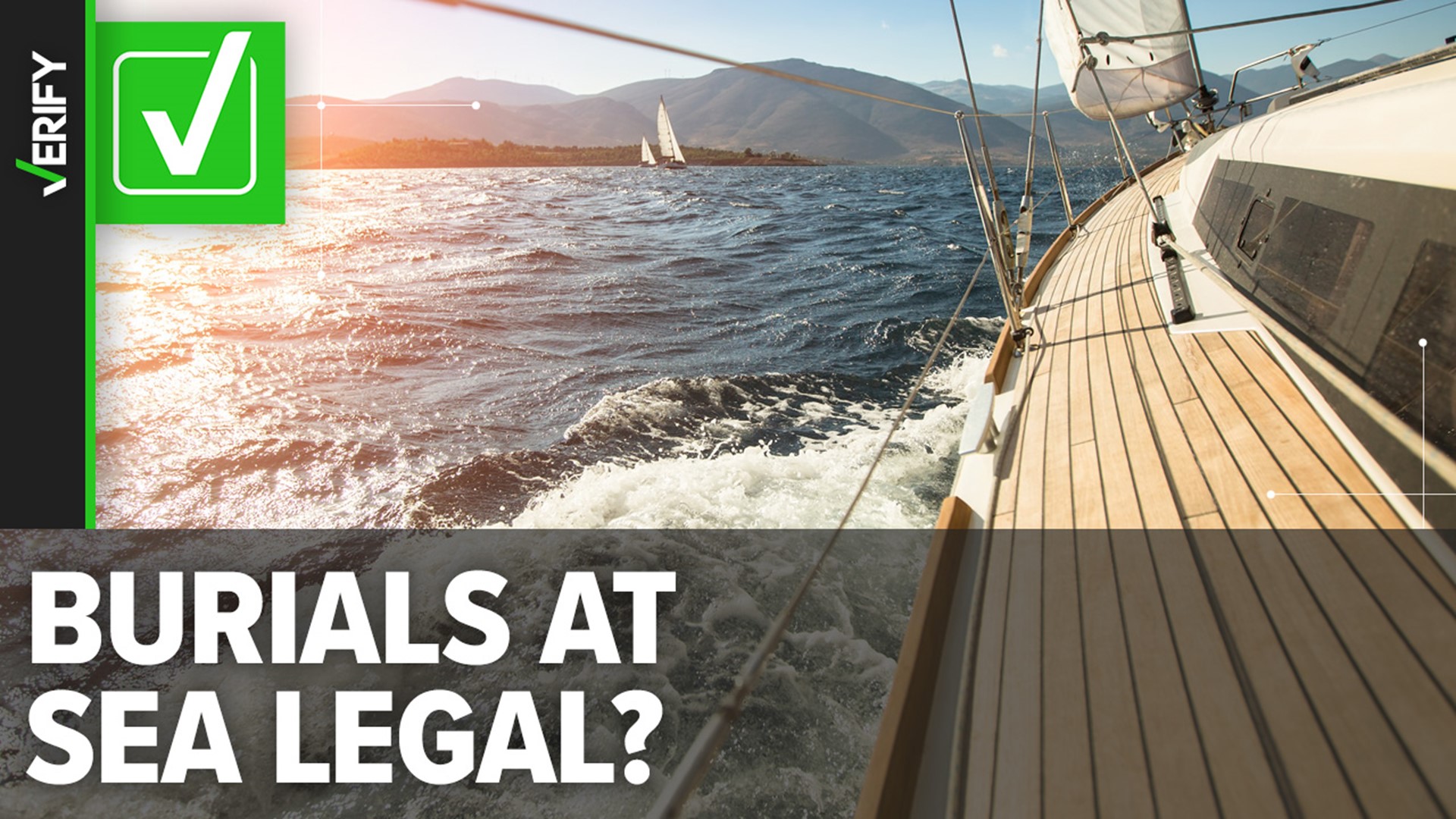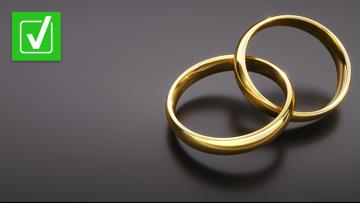In a TikTok video shared earlier this year, a family gathered on a boat pushes their loved one’s coffin into the ocean and bids them farewell.
The poster wrote in the video’s caption that her mother’s “last wishes were to have a full body burial at sea.” Some people in the comments were surprised that the ocean can be a person’s final resting place.
A popular TikTok mortician, whose response to the original video went viral on the platform, claims that burials at sea are legal and outlines certain rules that people need to follow.
THE QUESTION
Are burials at sea legal?
THE SOURCES
THE ANSWER
Yes, burials at sea are legal.
WHAT WE FOUND
Burials at sea are legal under a federal law that regulates the disposal of materials into the ocean.
The U.S. Environmental Protection Agency issued a general permit allowing burials at sea of both cremated and non-cremated human remains under the Marine Protection, Research and Sanctuaries Act (MPRSA). Pet burials at sea are not allowed under the permit.
The federal government only regulates burials in ocean waters, the EPA clarifies on its website. States may have their own requirements or rules for burials in rivers, lakes and bays.
Here are the federal rules for burials at sea:
- A full body burial must take place at least three nautical miles from land and in water that’s at least 600 feet deep.
- In certain areas of the country, burials are only allowed in water that’s at least 1,800 feet deep.
- The burial of cremated remains must take place at least three nautical miles from land.
If you use a casket to bury your loved one at sea, the EPA recommends one that is metal with all plastic materials removed.
The casket should have a minimum of 20 two-inch, evenly spaced holes drilled into it, according to the EPA recommendations. It should also be banded with at least six stainless steel bands, chains or natural fiber ropes so the casket will quickly and permanently sink.
Additional weight, such as sand or concrete, can also be added to the casket to offset the buoyancy of the body, the EPA says.
If you do not use a casket for your loved one’s burial at sea, the EPA recommends wrapping a natural fiber shroud around the body and adding weight, such as a steel chain, to help it sink.
Oftentimes, bodies buried at sea are not embalmed, Colonial Chapel Funeral Home and Crematory says. But there aren’t any rules against burying an embalmed body at sea.
People who want to bury their loved one’s ashes inside a container, rather than scatter them, are also allowed to do so under the at-sea burial rules. The container needs to float and be free of any kind of plastic. It’s best if the container also degrades or dissolves in a relatively short period of time, the EPA says.
You do not need to file an application or provide prior notice before a burial at sea. However, the general permit does require people to notify the EPA online within 30 days of the burial.
In 2020, the most recent year of EPA data available, more than 2,500 Americans were buried at sea.
A spokesperson for the National Funeral Directors Association (NFDA) told VERIFY that people have multiple options for sea burial ceremonies, including attended or unattended ash scatterings and full body burials.
Pricing varies based on the type of ceremony that someone chooses.
For example, a company called New England Burials at Sea that offers ceremonies throughout the country, lists the cost of an unattended ash scattering where family members are not present on the boat at about $1,000.
The company’s attended ash scatterings range anywhere from $2,275 to $9,975, depending on the number of passengers on the boat.
Unattended and attended full body burials at sea are priced between $9,975 and $10,975.
For comparison, the median cost of a funeral with a viewing and burial in 2021 was $7,848, according to an NFDA study.












